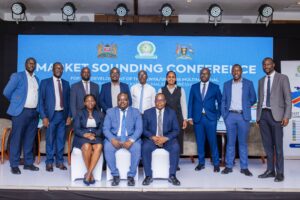Kenya-Uganda Expressway Declared Feasible and Ready for Investment
Kenya-Uganda Expressway Declared Feasible and Ready for Investment
Share
The East African Community (EAC) has confirmed that the long-awaited Kenya–Uganda Multinational Expressway is now a feasible and investment-ready project, paving the way for construction to begin soon.
The development marks a major step forward in regional infrastructure integration under the Northern Corridor, one of East Africa’s busiest trade routes.
In a statement released on October 21, the EAC announced that “movement between Kenya and Uganda via the Northern Corridor is set for transformation with confirmation of the Kisumu–Busia/Kakira–Malaba Multinational Expressway as a feasible and investment-ready project.”
The project, which spans both Kenya and Uganda, is expected to significantly improve cross-border transport efficiency and ease congestion at key trade points.
On the Ugandan side, the expressway will include a new 60-kilometre road from Jinja to Busesa under a Public-Private Partnership (PPP) arrangement, along with the dualling of the Busesa–Malaba and Busitema–Busia roads.
In Kenya, the initiative will see the upgrading of the Kisumu bypass and the Kimaeti–Lwakhakha road to bitumen standards, ensuring a smoother connection from the lakeside city to the Ugandan border.
The EAC further stated that the rehabilitation of the Busia and Malaba One Stop Border Posts (OSBPs) will be carried out to ease clearance processes, enhance security, and facilitate faster movement of goods and people between the two countries.
Also Read: Kimani Mbugua’s Father Reveals What His Son Wrote in Suicide Note
Kampala Conference to Shape Project’s Financing
This latest update comes just a week after the EAC, in collaboration with the governments of Kenya and Uganda and the African Development Bank (AfDB), announced plans to host a market sounding conference in Kampala from October 20 to 21, 2025.
The conference aims to engage investors and development partners in discussions on financing options for the 193-kilometre expressway project.
The expressway—linking Kakira–Malaba in Uganda and Busia–Kisumu in Kenya—has been identified as a flagship regional infrastructure initiative aimed at boosting trade, improving transport efficiency, and deepening cross-border integration across the Northern Corridor.
According to EAC Deputy Secretary General for Infrastructure, Planning, Productive, Social, and Political Sectors, Andrea Ariik Malueth, the expressway “is not just about building a road; it is about creating a modern, safe, and efficient transport artery that connects businesses, people, and opportunities across East Africa.”
Malueth explained that the Kampala conference represents a “turning point in the region’s quest to develop sustainable infrastructure through private sector funding,” adding that discussions will focus on transforming trade, strengthening regional integration, and unlocking opportunities for millions of citizens across the EAC.
Also Read: Ruto Enters ODM Political Debate After Raila Odinga’s Death
A Step Toward Regional Economic Integration
Participants at the conference are expected to review detailed feasibility studies, including traffic forecasts, engineering designs, and environmental and social impact assessments.
A key highlight will be the Bankability Report, which outlines project cost estimates and recommends viable PPP financing models.
The forum will also provide an opportunity for investors, bilateral donors, and development finance institutions to deliberate on strategies for mobilizing resources sustainably and ensuring the project’s long-term viability.
Once completed, the Kenya–Uganda Expressway is projected to dramatically reduce transport costs, cut transit times, and facilitate trade between Kenya, Uganda, and other East African Community member states.
According to the EAC, the upgraded OSBPs at Busia and Malaba; two of East Africa’s busiest border points, will reduce cargo clearance times by more than 40%, promoting faster trade turnover and reducing logistics costs for transporters and traders alike.
By aligning national priorities with regional development goals, the project is poised to become a model for cross-border infrastructure collaboration, supporting inclusive growth and sustainable development across the EAC bloc.
The confirmation of the expressway’s feasibility and investment readiness now signals the beginning of a new phase: one focused on mobilizing funding and translating years of planning into action for one of East Africa’s most ambitious infrastructure projects.

Committee Members of the East African Community (EAC) after a Discussion on the Construction of Kenya-Uganda Multinational Expressway. PHOTO/ EAC X.
You Might also Like











